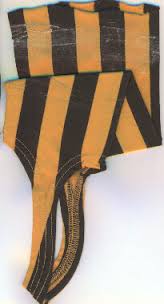© 2025 ALLCITY Network Inc.
All rights reserved.

America loves an underdog story and football fans should love the American Football League for that very reason.
The AFL, started in 1959 with its first games kicking off in 1960, bravely decided to take on the National Football League, which was entrenched as the preeminent professional football league and had been for decades. Numerous smaller leagues attempted and failed to compete with the NFL, but the “Foolish Club” – a monicker the AFL’s eight original owners called themselves – wouldn’t be stopped.
Back in the NFL’s heyday, games and teams centered around defense; the AFL changed everything. The American Football League teams enjoyed a more “wide-open” style of play, which was somewhat unsurprisingly due to terrible defensive play, especially in the first season. That fast-paced, exciting football continued to be the calling card of the AFL and the league can be credited with other football firsts; offering the two-point conversion, names on the back of jerseys, a scoreboard clock official, wide recruiting of African-American players and annual Thanksgiving Day games.
Simply, the American Football League helped the NFL become what it is today, through those innovations as well as their direct competition and eventual merger in 1970 led by then-commissioner Pete Rozelle.
Those original eight teams were the Boston Patriots, Buffalo Bills, Houston Oilers, Dallas Texans, San Diego Chargers, Los Angeles Raiders, New York Titans and Denver Broncos.
Denver may be a football city now, but rewind 55 years and the same cannot be said. The Mile High City was in love with baseball and had been since the 1880s, seeing multiple teams come and go, playing in now-forgotten and destroyed stadia.
But Denver loved their Broncos from the first time they played at Bears Stadium – later named Mile High Stadium – and the team’s debut came in Boston against the Patriots.
In fact, it was the inaugural game in AFL history, kicking off on Friday, September 9 at 8 p.m. at Boston University.*
There were the Broncos, donning their signature brown and yellow jerseys? That’s right, those monstrosities they rolled out in 2010 as a throwback were what the team were forced to wear in 1960. Those jerseys, which featured bright yellow home tops and plain white road tops and no names on the back, were purchased from the defunct college all-star game, the Copper Bowl. Of course, they included those hideous brown and yellow vertically striped socks, too. The brown helmets with white numbers painted on the sides came complete with scraped facemasks and the team didn’t even have jackets to keep warm.
The jerseys weren’t just bad-looking, they also shrunk after one wash, forcing quarterback Frank Tripuka to cut holes in the armpits in order to have enough range of motion to throw.*
But those ugly uniforms didn’t force Denver to falter. Boston jumped out to a 0-3 lead but the Broncos took the lead 7-3 when Tripuka connected with tailback Al Carmichael, who took the pigskin 59 yards for the score. It was the first official touchdown in AFL history. Denver widened that lead to 13-3 when Gene Mingo took a punt 76 yards down the sideline, blowing past the Boston defenders. “About three guys grabbed me,” Mingo said after the game with a smile, “but I just ran past them.”*
The Patriots scored a touchdown of their own, from Butch Songrin to Jim Colclough to bring the game to 13-10, Denver. The Broncos wouldn’t allow Boston to score again, even though the Pats were 16-point favorites and the AFL’s first game ended in its first upset victory.
In all, four future Ring of Famers played in the AFL’s and Broncos’ inaugural game, including; Receiver Lionel Taylor, Austin “Goose” Gonsoulin, Tripuka and Mingo.
In 1961, before the kickoff of the first game, those brown and yellow jerseys were sent ablaze at the 50-yard line in Bears Stadium. Here’s a look at one of the few remaining vertically striped socks:

(Information in this piece was gathered from a 2010 Smithsonian interview with George Blanda as well as excerpts of the book *The American Football League: A Year-by-Year History, 1960-69.)
Comments
Share your thoughts
Join the conversation



